
On Sunday January 14th I was invited to share some of my thoughts about Martin Luther King Jr. and the anti-racism movement at the Martin Luther King Day Jr event organized by Humanity In Action based on the title of one of dr. King's books and speeches "Where do we go from here?". This is an excerpt of my (way too long) speech: In the summer of 2016 I was one of the John Lewis Fellows to learn about the Civil Rights Movement in Atlanta, the place where dr. King was born and bred. Our dormitory was on a walking distance from the place where he was born, where he preached “Ebenezer Baptist Church” and where dr. King and 1000s of people from the Civil Rights Movement had marched. I bought the book during the John Lewis Fellowship when we visited the Martin Luther King memorial center in Atlanta 2 years ago but I never really had time to read it until now. I've taken some time over the past few days to read it and listen to the speech. It is fascinating fascinating to read and hear how relevant his thoughts still are, even for the situation in the Netherlands. During the Fellowship, however, we learned in practice about the relevancy of dr. Kings work and words. A few days after the start of the program there were nationwide #BlackLivesMatter demonstrations to protest the police killings of #AltonSterling and #PhilandoCastille. Together with my other fellows and thousands of other people I marched on the streets where dr. King and those active in the movement and marched 50 years earlier and I learned about another side of dr. King, especially from the black women who lead the fellowship program.
The dr. King we all know "I have a dream"
People all around the world learn about dr. King as the icon of the Civil Rights Movement and non-violent resistance. Almost everyone is familiar with his legendary ‘I have a dream speech’, given during the March on Washington in 1963. The familiar story most of us learn via mainstream media goes a little bit like this: the United States, the home of the brave of the free, was built on the backs of black people who were exploited as slaves for centuries. The Southern states relied heavily on the slave economy and the profitable cotton industry in contrast to the more industrialized North. When the Civil War broke out between Northern and Southern states the abolishment of slavery was one of the key reasons. On December 6th, Abraham Lincoln signed the emancipation declaration which abolished the institution of slavery. Southern states who still relied on forced labor tried to maintain the exploitation of black people by institution legalized racial segregation through Jim Crow laws. Most of us are familiar with the shocking images of signs “whites only” reflecting the harsh daily reality which reduced people racialized as black to a form of second class citizenship. Black and white children were not allowed to go to the same schools and they were not allowed to drink from the same water fountains. Black people had to sit on the back of the bus until Rosa Parks said “Nah” and refused to stand up. She sparked the development of a mass movement. Martin Luther King Jr. became the face and leader of the nonviolent resistance movement after the illustrious Montgomery bus boycot. White extremists from the Ku Klux Klan, fuelled by white supremacist ideology, attacked and terrorized black people who dared to stand up for their rights but many ‘liberal’ white people supported the movement. During the Freedom Rides even white allies got viciously attacked and sacrificed their lives for the freedom of black people. Despite the racist violence from the KKK, racist police and white supremacist politicians, despite being verbally and physically attacked dr. King held fast on to his philosophy of nonviolent resistance. In 1963 dr. King gave his legendary I have a dream speech during the March on Washington, he lead the march on Selma leading to the historical victories of the Civil Rights Movement, legislation which abolished racial segregation and gave black people the right to vote. Martin Luther King Jr. became the icon of the movement and is still being praised all over the world. Although, dr. King, deserves much praise and recognition for his courageous and exceptional work, this simplified and “Santa clausified” version of the story of dr. King does injustice to what King actually fought and sacrificed his life for. It can even be employed to damage to the work of does who fight and work against racism today.
An example: the Santa clausification of dr. King in de Nieuwe Kerk Amsterdam
This simplified reconstruction of dr. King and the Civil Rights Movement, is being reproduced all over the world by commercial enterprises, NGOs, in children’s books and in exhibitions such as the exhibition “We have a dream” in De Nieuwe Kerk in Amsterdam. Already expecting the mainstream version of the story of Martin Luther King jr. I still decided to visit the day before the Martin Luther King Day Jr. event. The exhibition is described on the website as follows: “We Have a Dream is an exhibition about three world-renowned figures who profoundly influenced the course of the twentieth century: Mahatma Gandhi, Martin Luther King and Nelson Mandela. They were ordinary people who led extraordinary movements against racial discrimination and social injustice. All three became role models around the world but also drew fierce criticism and opposition. Two were assassinated because of their ideas and activism.” #1 The Santa clausified King vs. The Radical King The exhibition consists of several panels with text, images and videos of Martin Luther King Jr. and a few historical documents. Although the makers have been quite creative in using the space it confirmed my doubts and expectations. The exhibition includes all of the ingredients of the Santa clausified version of dr. King. The first ingredient is the reduction of King’s struggle to a fight against Jim Crow segregation and for integration around the “I have a dream speech”. This speech can arguably be seen as one of the best, of not the best, public speech in modern history. The rhetorical excellence combined with beautiful work way dr. King preached on the Washington Mall continue to inspire people. There is more to dr. King though. Over the past years several books and articles have been published about the evolution of King’s vision towards more radical vision. Dr. West edited a selection of speeches in the book “The Radical King” which reflect his thoughts on issue such as, white supremacy, war and capitalism. More recently, Brandon M. Terry, wrote an essay in which he stated that King has become a “mythic figure of consensus and conciliation, who sacrificed his life to defeat Jim Crow and place the United States on a path toward a “more perfect union” , whose image is even being used by conservatives. It is not a coincidence that the white supremacist in chief Trump was able to symbolically celebrate dr. King in the same week that he called Haiti and several African nations ‘shithole countries’. In the mainstream Santa clausified version of dr. King he seems be be frozen in the time period between the Montgomery bus boycott of 1955 and the legendary march on Selma in 1965. In reality, however, King’s politics and vision evolved, especially after the victories of the Civil Rights Act (1964) and the Voting Rights Act (1965). Over the past few years activists from different networks such as #BlackLivesMatter have organized events and campaigns to ‘desanitize the legacy of dr. King’. Zo startte Ferguson Action de hashtag #ReclaimMLK om de kant van King te laten zien die we vaak niet in mainstream media en educatie zien. Many of the problems dr. King fought against continue to plague not only the United States but oppressed people around the world: global economic inequality continues to keep people trapped in poverty, over the few decades the US has continued to wreak havoc around the world with its violent military might and over the pasy few years the #BlackLivesMatter movement showed the world how white supremacy continues to kill innocent and unarmed black men, women and LGTQ+ people. Ferguson Action network, an activist network which arose after the police murder of Mike Brown , stated this about reclaiming the legacy of dr. King: “Our movement draws a direct line from the legacy of Dr. King. Unfortunately, Dr. King’s legacy has been clouded by efforts to soften, sanitize, and commercialize it. Impulses to remove Dr. King from the movement that elevated him must end. We resist efforts to reduce a long history marred with the blood of countless women and men into iconic images of men in suits behind pulpits.” Opal Tometi, one of the co-founders of the #Black Lives Matter network, who visited Amsterdam several years a go tweeted this:
The King Philosophy: Triple Evils
If you develop an exhibition, give a talk or present the work and legacy of dr. King without mentioning (elements of) his fundamental philosophy of the triple evils you are not doing justice to what he sacrificed his life for. In the dominant narrative the story is that King solely focused on the nonviolent fight against racism whilst in reality he fought just as hard against poverty, economic inequality and the increasing militarism of the United States. Dr. King’s philosophy was based on what he called “the Triple Evils” of Poverty, Racism and Militarism: “forms of violence that exist in a vicious cycle. They are interrelated, all-inclusive, and stand as barriers to our living in the Beloved Community. When we work to remedy one evil, we affect all evils.” King called the United States “the greatest purveyor of violence in the world today” in his controversial “Beyond Vietnam” speech in 1967 as he became more critical and aware of the relation between America’s foreign policy and war and inequality in the US.[1] In his “Where do we go from here?” speech he stated: “A nation that will keep people in slavery for 244 years will "thingify" them and make them things. And therefore, they will exploit them and poor people generally economically. And a nation that will exploit economically will have to have foreign investments and everything else, and it will have to use its military might to protect them. All of these problems are tied together.” In the same speech and book he argued for a basic income for all as a solution for persisting economic inequality and poverty. If you leave the exhibition “We Have a Dream”, however, without doing further research you’ll think that dr. King’s dream had come trough before he was assassinated, black people had won the right the vote and were allowed to sit in the front ánd back of the bus right?
#2 Reduce racism to white supremacist violence
A second ingredient of the Santa clausification is the reduction of racism and white supremacy to the violence of white extremists like the KKK and Jim Crow segregation in the South. Equating racism and white supremacy to these specific manifestations of these dehumanizing systems erase or play down the other more covert and subtle forms of racism. On one of the panels in the exhibition “We have a dream” the issue of racism is explained. As expected it only mentions Jim Crow segregation in the South: segregation in the busses, schools and public spaces such as parks. Not one word was written about the North suggesting that the North was free of racism and dr. King did not think about racism in the rest of the country or the rest of the world. Ta-Nehisi Coates described racism in the North in his seminal essay ‘a case for reparations”: “In the North, legislatures, mayors, civic associations, banks, and citizens all colluded to pin black people into ghettos, where they were overcrowded, overcharged, and undereducated. Businesses discriminated against them, awarding them the worst jobs and the worst wages. Police brutalized them in the streets. And the notion that black lives, black bodies, and black wealth were rightful targets remained deeply rooted in the broader society.” Only a week after the victory of the Civil Rights Act (1965), which gave black people the right to vote, major riots broke out in Watts, Los Angeles. More than 1000 people were left injured, 34 people died and over $3 billion worth of property in today’s money was damaged. The anger which resulted in the riots were fuelled by the cycle of poverty, institutional racism and police violence in this predominantly black area of a Northern city, Los Angeles. Although King did not condone the outbreak of riots he did not blame the people, he blamed the system which caused the anger and despair resulting in the riot.
The danger of this simplification of racism is that it obscures how racism manifests itself differently in different geographical locations and different time periods. And this narrative can be misused to critical thinking about the way racism and white supremacy have continued to evolve and change just like society has evolved and change over time. This narrative is often mobilized in the Dutch context to silence and downplay institutional racism in the country of white innocence. Professor Gloria Wekker described it as follows:
“It encapsulates a dominant way in which the Dutch think of themselves, as being a small, but just, ethical nation; colour-blind, thus free of racism; as being inherently on the moral and ethical high ground, thus a guiding light to other folks and nations. Notwithstanding the many, daily protestations in a Dutch context that “we” are innocent, racially speaking; that racism is a feature found in the US and South Africa, not the Netherlands; that, by definition, racism is located in working-class circles, not among “our kind of middle-class people”; much remains hidden under the univocally and the pure strength of will defending innocence. I am led to suspect bad faith; innocence is not as innocent as it appears to be.” One of the prime examples of white innocence is the most popular national tradition Saint Nicolas. The mythic figure who is accompanied by a black servant, which is in reality often played by white people in blackface to reproduce racist caricatures of black people. Altough many Dutch people claim that it is just an innocent children’s holiday and people should not associate it with racism or a history of slavery and colonialism the reaction on those who critize the tradition shows that the tradition may not be as innocent as people claim. Over the past few years the civil and human rights of anti-zwart piet activists have been violated repeatedly by police, white extremist and even those who claim to be ‘open, liberal or moderate white people’. In 2011 Jerry Afriyie and Quinsy Gario were unlawfully arrested by the police just for wearing a t-shirt stating ‘Zwarte Piet Is Racisme’ at the national Saint Nicolas parade in Dordrecht. In 2014 activists of Kick Out Zwarte Piet, including myself, attempted to organize a nonviolent protest at the Saint Nicolas parade in Gouda. After the mayor ordered us to a location which would make the protest futile we decided to continue our protest in the spirit of King’s vision on civil disobedience. Around 70 people were arrested, Jerry Luther King was arrested violently by the police, many more were left traumatized. Two years later in 2016 200 people were arrested in Rotterdam, some again with violence. In 2017 three busses with transporting anti-zwart piet activist to the North of the Netherlands were dangerously blocked on the high way by white extremists after a white lady named Jenny Douwes publicly called to stop Kick Out Zwarte Piet from exercising there right of freedom of speech and peaceful assembly. After blocking the road she was praised in Dutch mainstream media as a hero and got space in time to state and explain ‘I am not a racist’. The exhbition " We have a dream" does include a short video of scholar Philomena Essed, radio host Andrew Makkinga and anti-zwarte piet activist Jerry ' Luther King' Afriyie (yes, that's his real name), but it fails to make a relation between racism and anti-racism in the Netherland and the rest of the exhbition. When I was there the video was shows on a screen right next to exit and but I was unable to listen to because there was no sound. De Nieuwe Kerk charges 16,- per person, its free for kids aged until 11. so the Santa clausification and commodification of King can be quite lucrative as the institution welcomes thousands of visitors, including a lot of tourists, every week. So the exhibition is a missed opportunity to teach thousands of people not just about the Santa clausified and commercialized version of dr. King but about his radical vision which is still relevant today, also to address racism, economic inequality and militarism in the Netherlands and globally.
#3 The problem with white moderates
Dr. King was well aware of the different manifestations of racism and white supremacy. In the book "Where do we go from here" King critically analysed how it evolved over time from the era of slavery in which pseudoscientific racist theories were used to legitimize the exploitation of black labor to paternalistic behaviour of white moderates who claimed that they believed in equal rights but still acted in a way that revealed that they had internalized the idea of white superiority. He devoted a whole chapter to the problem of ”racism and the white backlash”. After a decade of nonviolent struggle the Civil Rights Movement had made major victories. After several centuries of violent oppression and exploitation of black people he noticed that black people had won the battle legally but in practice the struggle still had to be continued. Whilst a number of white people had joined them in the movement and sacrificed their lives, the backlash of white supremacists grew and segregation persisted to exist. 90% of the schools were still segregated, employment opportunities were still unequal and black people continued to be trapped in poverty in the North and the South. The backlash, however, did not just come from white extremists, King noted that the lack of action of white moderates and liberals was one of the biggest problems, he wrote: “Whites, it must frankly be said, are not putting in a similar mass effort to re-educate themselves out of their racial ignorance. It is an aspect of their sense of superiority that the white people of America believe they have so little to learn.” This is also the case in the Netherlands. A key example is a statement Femke Halsema – the former leader of the Green Left party - made recently in an interview about anti-racism in the Netherlands. First, she mobilized the narrative which equates racism to explicit forms of racism such as the Jim Crow laws by using segregation in the busses as an example. Second, she blamed the #MeToo campaigners and anti-zwarte piet activist for ‘exagerrating’ and misusing American concepts such as ‘white privilige: “They prove themselves no service with, for example, the use of the American concept of 'white privilege'. In the Netherlands black people do not have to be in the back of the bus separately. You can not just move a discourse from a country that has had systematic oppression to here, and say to the Dutch: you are doing the same thing. That is not true, and distracts from the racism that is indeed here. If you call everything racism, you can not find the real racists anymore.”
This statement displays the ignorance some ‘white moderates and liberals’ have about the complexity of racism and the different ways it manifests itself. It also shows how the narrative of equating racism to white supremacist violence and systematic racial segregation can be mobilized to silence anti-racist activists. Femke, who probably considers herself committed to justice and equality, is one example of many white liberals who actually throw anti-racist activists under the bus by downplaying these issues in the Dutch context. Over the past few decades much research has been done proving that racism and discrimination are structural problems in different areas of Dutch society. Recent research of criminologist showed that white job applicants with a criminal record have more chances of receiving a positive reaction compared to applicants with a migrant background without a violent offense. Amnesty International criticized Dutch police as ethnic profiling continued to infringe the human rights of Dutch people with a migrant background. Although the Netherlands may not have had a formal system of segregation like the US in until the 1960s, the schools continue to be heavily segregated based on class and ‘ethnicity / race’ between so called ‘black and white schools’. And although the Netherlands did not have formal Jim Crow segregation, it was one of the major European nations involved in the trade in enslaved Africans and colonized several territories in the Americas and Asia. The first enslaved Africans in the United States arrived on a Dutch ship and New York used to be a Dutch colony, hence the name Harlem and Brooklyn. In the 1940s the Dutch fought a violent colonial war to continue its control over Indonesia and Surinam only gained independence in 1975. Most black people only migrated to the Netherlands in the 1970s and they were not welcomed with “Dutch tolerance’, documents from the archives show that certain neighbourhoods in the Netherlands were actually closed of for Surinamese people and people from Turkey and Morocco. White innocence is a myth and these kinds of statements and narratives only help to keep this “fantasy and self deception”, as dr. King would say, alive.
Similarly to dr. King, the story of Rosa Parks is often simplified. She was not just some random lady who one day just decided to resist white supremacy by refusing to stand up for a white man to sit in the back of the bus. She was a trained activist and a member of the National Association for the Advancement of Colored People (NAACP), the organizaton that trained Rosa Parks. The Netherlands did not have a Rosa Parks, because there was no Jim Crow segregation. Yet, we did have a Ernestine Comvalius who resisted housing discrimination and was one of the people involved in the LOSON, a movement of Surinamese, who squatted building in Amsterdam Southeast, together with allies of the white squatting movement so Surinamese people and other people of color could have decent housing. We did not have a dr. King and a Civil Rights Movement but we did have several movements and leaders who resisted Dutch colonialism and racism from the early 1920s until today. This history, however, has long remained hidden and silenced because of the dominance of the ‘white innocence’ narrative which is keen to acknowledge racism in the United Stated but remains silence about similar problems within the boundaries of the Dutch nation. That is why The Black Archives developed the exhibition ‘Black & Revolutionary: the story of Hermina and Otto Huiswoud’, a story of an revolutionary activist couple who fought for liberation and equality all around the world including the US and the Netherlands. In fact, Hermina and Otto Huiswoud were in close contact with people who had laid the foundation for the “Civil Rights Movement of the 1950s to 1960s. Activists and scholars such as W.E.B. duBois was a friend of the Huiswouds. Dr. King stated:
“History cannot ignore W. E. B. DuBois because history has to reflect truth and Dr. DuBois was a tireless explorer and a gifted discoverer of social truths.” In The Black Archives we found exceptional documents and newspaper clippings which were collected by Otto and Hermina Huiswoud about the Civil Rights Movement. As they had lived in the United Stated for a long time and actively fought against racial segregation in the country it was a matter that was very dear to them. This weekend we will put some of the documents and newspaper clippings from the archive on display and during the tours we will pay special attention to documents about the Civil Rights Movement such as the Ebony magazine from 1962 with dr. King on the cover and a newspaper article about the day dr. King visited Amsterdam in 1946. The Santa clausification of Martin Luther King Jr., however, can be used for lucrative business.
Next blog:
In a next blog I will write more about the relevant issues dr. King addressed in his “Where do we go from here” speech and book and some of the lessons we can learn from it for the current anti-racism in the Netherlands. One of the things I’d argue is that we need to complicate our thinking and organizing. We can learn from “the Triple Evils philosophy of dr. King which related racism with militarism and capitalism but this was not complete. It should be expanded to the five evils to include homophobia and sexism. King also addressed the question of Black Power and the necessity of political and economic empowerment of black people and the importance of decolonizing the mind. Additionally, he stressed the importance of building coalitions with people from different backgrounds, especially whites who were prepared to sacrifice something for the greater good. Dr. King said: "In the End, we will remember not the words of our enemies, but the silence of our friends." White people, stop appropriating, silencing, sanitizing and Sant clausifying black history. If you want to learn about the more truthful history of King and the Civil Rights Movement, visit The Black Archives and speak out against inequality and oppression in the spirit of King. Not just on Martin Luther King Jr. day but every day. We give tours in The Black Archives and the exhibition Black & Revolutionary every weekend.
2 Opmerkingen
Where do we go here? Lessen van Martin Luther King voor de anti-racisme beweging in Nederland1/7/2018
Door: Mitchell Esajas, mede-oprichter The Black Archives
Zondag 14 januari zal het Martin Luther King Day event van Humanity In Action plaatsvinden, de titel is dit jaar "Where do we go from here" op basis van een van de befaamde speeches en het gelijknamige boek van Martin Luther King Jr. uit 1967. Ik ben uitgenodigd om wat gedachten te delen over de anti-racisme beweging in Nederland, een grote eer. Afgelopen weekend heb ik tussen de rondleidingen in The Black Archives door even wat archiefstukken van Hermina Huiswoud bekeken. Hermina verzamelde tot ze in 1998 overleed magazines, krantenknipsels en boeken onder meer over de Civil Rights Movement. Één van mijn favoriete vondsten in het archief is een Ebony magazine uit 1962 met Martin Luther King Jr. op de cover. In het magazine lag ook een krantenartikel over Martin Luther King Jr. verborgen uit het Algemeen Handelsblad uit 1964, dr. King gaf die week een lezing in de RAI in Amsterdam tijdens een congres voor Europese baptisten.
De strijd van King is nog steeds nodig
In de zomer van 2015 had ik het privilege om naar Atlanta te gaan voor het John Lewis Fellowship voor een zomer programma over de Civil Rights Movement. Daar kocht ik het boek "Where do we go from here?" van Martin Luther King Jr. in het Martin Luther King Memorial Center, vlak naast de plek waar hij was geboren. Pas nu heb ik echter de tijd om het boek te lezen. Het is fascinerend om te lezen dat veel van de discussies die in de jaren '50 in de VS speelden ook vandaag spelen, zowel in de VS als in Nederland, weliswaar op een andere manier. Tijdens het fellowship zouden we leren over de burgerrechtenbeweging van de jaren '50 en '60. De heftige gebeurtenissen toonden echter dat racistisch geweld in de 21e eeuw nog even actueel was als zestig jaar geleden. Die zomer vonden er massale #BlackLivesMatter protesten plaats na de moorden op twee onschuldige zwarte mannen Alton Sterling en Philando Castille. De strijd die Martin Luther King Jr. en de burgerrechtenbeweging voerden werd voortgezet door een nieuwe generatie activisten, er speelden echter pittige discussies over de strategie en tactiek die voor vooruitgang kon zorgen, lees hier het essay dat ik voor Humanity In Action schreef.
De verzameling van Hermina Huiswoud
Hermina volgde de politieke ontwikkelingen in de wereld op de voet. Omdat Otto en Hermina zelf lang in de VS hadden gewoond en hun leven hadden geweid aan de strijd voor emancipatie van zwarte mensen volgden ze de burgerrechtenbeweging met extra interesse. In de collectie van de Huiswouds vonden we een map met krantenknipsels over de Civil Rights Movement . In de stapel vond ik een mooi artikel over een actie die scholieren uit Amsterdam hadden georganiseerd om solidariteit te tonen met kinderen in Little Rock. In Little Rock, Arkansas, mochten zwarte kinderen in 1957 voor het eerst naar een "geïntegreerde school" nadat de NAACP, één van de prominente burgerrechtenorganisatie, de Brown vs. Board of Education rechtszaak won. Door de gewonnen rechtszaak werd rassensegregatie op scholen verboden. Vele witte mensen in het zuiden van de VS, waaronder de gouverneur van de staat Arkansas wilden houden de de verandering echter tegenhouden. In het boek "Where do we go from here" wijt King een heel hoofdstuk aan de witte weerstand tegen de vooruitgang die de burgerrechtenbeweging aan het boeken was: "The persistence in depth and the dawning awareness that Negro demands will necessitate structural changes in society have generated a new phase of white resistance in North and South, schreef hij. Witte extremisten riepen op om de zwarte kinderen die naar de eerste geïntegreerde school gingen aan te vallen, de gouverneur roep zelfs de Nationale Garde op om de kinderen ervan te verhinderen om naar school te gaan. De toenmalige president Eisenhower stuurde als reactie daarop troepen naar de school om de kinderen onder bescherming naar school te laten gaan. De beelden van dit extreem racistische geweld gingen de hele wereld over en bereikten kennelijk ook kinderen in Amsterdam. Volgens een artikel uit het Parool van 2 oktober 1957 zamelden zo een duizend scholieren uit Amsterdam, o.a. van mijn oude school het Spinoza Lyceum, handtekeningen in om hun solidariteit te tonen met de kinderen in de VS. Ze overhandigden deze handtekening en een petitie aan de Amerikaanse ambassadeur, een mooi voorbeeld van solidariteit. King maakte zich echter niet alleen zorgen om de weerstand van witte extremisten, maar juist om de weerstand onder witte liberalen: "They are uneasy with injustice but unwilling yet to pay a significant price to eradicate it." (...) "Over the last few years I have felt that their most troublesome adversary was not the obvious bigot of the Ku Klux Klan or the John Birch Society, but the white liberal who is more devoted to "order" than to justice, who prefers tranquility to equality" (King, 1967: 93)
Kritiek van de Black Power beweging
Martin Luther King Jr. schreef het boek in 1967, een periode na de overwinningen van de Civil Rights Act (1964) en Voting Rights Act (1965). Na een decennium geweldloze strijd hadden zwarte mensen op papier eindelijk gelijke rechten en kansen. In de praktijk zette de segregatie, onderdrukking en ongelijkheid zich echter voort en op bepaalde vlakken was het zelfs verergerd. Mede vanwege het gebrek aan verandering ondanks de politieke overwinningen van de burgerrechtenbeweging, en het aanhoudende geweld raakte vele zwarte activisten teleurgesteld. Velen begonnen de strategie van geweldloos verzet in twijfel te trekken. In het tweede hoofdstuk van het boek beschrijft King de intense discussies die hij met o.a. Stokely Carmichael voerde. Carmichael en zijn medestanders zagen het nut van geweldloos verzet niet meer in en pleitten voor een visie gebaseerd op de slogan 'Black Power'. Zo zei Carmichael het volgende: “Dr. King's policy was that nonviolence would achieve the gains for black people in the United States. His major assumption was that if you are nonviolent, if you suffer, your opponent will see your suffering and will be moved to change his heart. That's very good. He only made one fallacious assumption: In order for nonviolence to work, your opponent must have a conscience. The United States has none.” In plaats van de focus op veranderen van het gedrag van de witte meerderheid moesten zwarte mensen zich volgens Black Power sympathisanten richten op het verkrijgen van politieke en economische macht. Bovendien zouden zwarte mensen bereid moeten zijn om zichzelf te verdedigen, zo nodig met geweld. Hoewel King zich kon vinden in de roep om politieke en economische macht te vergaren noemde hij Black Power een "nihilistische en onrealistische" visie. Zwarte mensen vormden een minderheid binnen de Verenigde Staten dus hij vond het onrealistisch om te denken dat zwarte mensen zich volledig konden separeren van witte mensen. De VS was een multi-etnische staat was waarin de verschillende groepen onlosmakelijk met elkaar verbonden waren én van elkaar afhankelijk waren. Bovendien vond King dat zwarte mensen een gewelddadige strijd tegen witte extremisten nooit zouden kunnen winnen omdat zei de politie, het leger en de staat achter zich hadden staan. Een gewelddadige strijd zou een vicieuze cirkel van haat en geweld opwekken, aldus King. Naast deze praktische argumenten was King geweldloos verzet op basis van zijn visie op liefde een fundamenteel aspect van zijn filosofie en levenswijze: "Returning violence for vilence merely multiplies violence, adding deeper darkess to a night already devoid of stars. Darkness cannot drive out darkness: only light can do that. Hate cannot drive out hare: only love can do that" (King, 1967: 64).
The Radical King
In "The Radical King" beschrijft dr. Cornel West hoe in mainstream media en educatie een bepaald beeld van dr. King is geconstrueerd dat hem reduceert tot een gemodereerde leider wiens visie was beperkt tot raciale integratie op basis van de befaamde "I have a dream speech". In werkelijkheid had dr. King een veel radicalere visie die hij constant verder ontwikkelde. Dr. King had serieuze kritiek op de manier waarop het kapitalistische systeem armoede onder zowel zwarte als witte mensen reproduceerde. Daarnaast had hij stevige kritiek op het militarisme van de VS dat in de jaren '60 een gewelddadige oorlog voerde in Vietnam. De drie grootste problemen van de VS noemende hij ook wel de "triple evils" van racisme, militarisme en armoede. King kon zich daarom wel vinden in de noodzaak om politieke invloed te winnen en economische macht op te bouwen. Zo beschreef hij in de gelijknamige speech "Where do we go from here" het interessante voorbeeld van "Operation Breadbasket". Dat was een programma van de burgerrechtenbeweging waarin ze afspraken om alle bedrijven die zwarte mensen discrimineerden en waar zwarte mensen in ondervertegenwoordigd waren te boycotten. "If you respect my dollar you must respect my person" zei King. Ze zetten bedrijven onder druk om te investeren in zwarte bedrijven en wijken zodat de economie in de zwarte achterwijken gestimuleerd konden worden. Met het programma wisten ze 2000 banen te scheppen en €15 miljoen aan inkomen binnen de zwarte gemeenschap in Chicago te genereren.
Een veranderd discours
Een ding kunnen we denk ik wel vaststellen: tien jaar geleden keek men je aan alsof je gek was als je durfde te zeggen dat er ook in Nederland sprake is van racisme. Ik durf te beweren dat de protesten (o.a. tijdens de nationale intochten) tegen zwarte piet essentieel zijn geweest om het publieke debat te doen kantelen en de keerzijde van de witte onschuld te openbaren. Na de gebeurtenissen rondom het zwarte piet debat: de emotionele racistische reacties van witte Nederlanders, de vele bedreigingen aan het adres van bekende en minder bekende Nederlanders en afgelopen jaar de levensgevaarlijke wegblokkade kan niemand dat racisme ook nog diep geworteld is in de Nederlandse samenleving. Door het intellectuele werk van zwarte vrouwen zoals Gloria Wekker, Philomena Essed en Anousha Nzume ontwikkelt zich naast het groeiende bewustzijn ook een taal om institutioneel racisme en ongelijkheid in de Nederlandse context te duiden. Termen en concepten zoals witte onschuld, wit privilege, institutioneel racisme en intersectionaliteit worden op regelmatige basis in mainstream media besproken. Zo was Sylvana Simons onlangs te gast bij Buitenhof en nam ze de ruimte om deze kwesties uitgebreid te bespreken. De kans is klein dat dit tien jaar geleden zou hebben plaatsgevonden. Een van de lessen die ik in Atlanta leerde was dat de focus vaak op dr. King ligt als de Civil Rights Movement wordt besproken. Achter en naast dr. King stonden echter duizenden mannen én vrouwen die de ruggengraat vormden van de beweging. Met name de rol van zwarte vrouwen zoals Coretta Scott King, Ella Baker en Fannie Lou Hamer in deze bewegingen wordt echter vaak vergeten of gewist uit de geschiedenis. Onlangs ontvingen wij een donatie, een stapel Ebony magazines uit de jaren '80. Op één van de magazines staat een mooie coverstory over Coretta Scott King "The Untold Story of Martin Luther King Jr. and Coretta Scott King". In 2015 gaf Sylvana Simons een lezing tijdens de Martin Luther King Day, het stond dat jaar in het teken van rol van vrouwen in de anti-racisme beweging. Drie jaar later kunnen we vaststellen dat zwarte vrouwen zoals Wekker, Simons en Nzume zich duidelijk laten horen en zien. Zij zijn de personen die het verhaal, de theorie en de taal van anti-racisme op een krachtige, elegante inhoudelijke en waardige manier weten te vertalen naar een breder publiek. Het wordt ze niet altijd in dank afgenomen maar de kans is klein dat ze uit de geschiedenis zullen worden geschreven. Achter deze zwarte vrouwen die prominent in de media voorkomen staan echter honderden andere zwarte vrouwen en vrouwen van kleur, en ook wat mannen, die zich dagelijks inzetten voor de hardnekkige strijd tegen racisme, een erfenis van honderden jaren kolonialisme en slavernij. Sommigen zoals Jessy, Chantelle, Devika en Kitty door hun tijd en energie op te offeren tijdens vreedzame protesten van Dokkum tot Rotterdam en anderen door constant in discussie te gaan met familie, met schoolbesturen, met collega's op de werkvloer en anderen die zich nog onder de mantel van witte onschuld verschuilen.
Where do we go from here?
De grote vraag die dr. King in 1967 stelde was “Where do we go from here?”. Ook voor de de anti-racisme beweging is dit een belangrijke vraag: Hoe gaan we verder en wat wordt de volgende stap? Heeft het nog nut om te blijven protesteren tijdens de (nationale) intochten of wordt het tijd voor andere acties? Moeten we ons minder richten op protest tegen en meer energie steken in het bouwen van eigen instituten ten behoeve van politieke en economische invloed? Wat is de rol van witte bondgenoten, hoe dealen we met anti-zwart racisme binnen andere gemeenschappen van kleur en creëer je solidariteit tussen verschillende gemeenschappen? Hoe zorgen we voor een beweging waarin andere vormen van onderdrukking zoals homofobie, transfobie, seksisme etc. ook de benodigde aandacht krijgen zonder dat een door witheid gedomineerde verwaterde versie van intersectionaliteit de boventoon gaat voeren? Hoe verbinden we de strijd tegen zwarte piet met andere vormen van institutioneel racisme én andere vormen van ongelijkheid en onderdrukking zoals het vluchtelingenvraagstuk en economische ongelijkheid op basis van het neoliberale kapitalisme? Dit zijn een paar complexe vragen waar over nagedacht dient te worden en waar ik het antwoord (nog) niet op heb. Op 14 januari gaan we in gesprek over de (toekomst van) de anti-racisme beweging in Nederland en deze vragen. Eerst tijdens de Martin Luther King dag, vervolgens tijdens de lezing met Gloria Wekker bij The Black Archives. Rondleidingen met thema Martin Luther King Jr. en de Civil Rights Movement In het kader van de Martin Luther King Day zullen we op zaterdag 13 en zondag 14 januari om half 1 speciale rondleidingen geven waarin we exclusieve archiefstukken over de Civil Rights Movement zullen tonen. Daarnaast kan je 2 x 2 kaarten winnen voor de uitverkochte lezing van Gloria Wekker op 14 januari. Stuur een kort essay of opiniestuk (max. 2000 woorden) over jouw visie op de toekomst van de anti-racisme beweging in Nederland en gebruik hiervoor het werk van Gloria Wekker en/of Martin Luther King Jr. Stuur dit uiterlijk vrijdag 12 januari om 17:00 op naar [email protected]. Op zaterdag 13 januari maken we de winnaars bekend.
Aanbevolen boeken:
- Martin Luther King Jr. - Where do we go from here - Martin Luther King Jr. The Radical King, edited by Cornel West - Kwame Ture (Stokely Carmichael) and Charles V. Hamilton Black Power One of the main reasons for us to come to New York is that a part of the personal collection of Hermie Huiswoud can be found at the archive of New York University. We did not now what to expect though. Over the past few days we've delved into the boxes and found personal letters, personal documents, photographs, articles, poetry and even the script of a play written and collected by Hermie.😌😌 I feel like a kid in a candy store going through the boxes and like we are solving a puzzle about a hidden history of black revolutionairs in which we have to find the missing pieces. We found a few interesting pieces already such as a folder with biographies of women which Hermie met such as Shirley Graham, wife of the late WEB duBois. Hermie writed that her impression was that he was "inaccessible, cocky and aloof" but after spending times with him in the Soviet Union but they became good friends later. She also wrote about her travellings through the Carribean with Otto Huiswoud in which they attempted to mobilize black trade union workers and debated Marcus Garvey in Jamaica. Through the Communist party and other radical organizations such as the African Blood Brotherhood they were in contact with notable figures such as Jomo Kenyatta, George Padmore, Claude McKay and others. We also found even more letters by and to Langston Hughes, the well known Harlem Renaissance poet, showing that they had a strong relationship. She even wrote some poetry herself. The documents and photographs show that they lead a fascinating life fully dedicated to the struggle against capitalism, imperialism and racism in a time in which most black people were still bound by the yoke of the systems they fought against since the 1920s Altough this work doesnt feel like work we also have some time to relax and enjoy the weather and the city that never sleeps. One of the highlights already was the free Central Park "Tribute to Prodigy" concert with Mobb Deep's Havoc.🔥🔥🔥 The coming days we will look into the archive further and visit a few other cultural institutions. Next week we will go to Washingto DC to meet curators of the Smithsonian National Museum of African American History and Culture also known as thr Blacksonian. On Friday August 11th we will give a presentation at the Sankofa Video Books & Cafe bookstore near Howard university. If you happen to be in DC, link up! See: https://www.facebook.com/events/186547045219176/?ti=cl
Today is also exactly one month that we launched our crowdfunding campaign. We already got the support of more than 600 people and raised more than €18.000. We have one week left to reach €20.000, if you havent donated yet, please do and support the Black Archives. This trip makes us realize even more how important it is to document, archive and tell our own stories! Donate via: Apura! |
The Black Archives BlogArchieven
Juni 2024
|
Openingstijden/Opening TimesWoensdag/Wednesday 11.00 - 17.00 uur
Donderdag/Thursday 11.00 - 17.00 uur Vrijdag/Friday 11.00 - 17.00 uur Zaterdag/Saturday 11.00 - 17.00 uur Onze nieuwe locatie in Amsterdam Zuidoost is geopend. Neem contact op via de pagina contact voor rondleidingen buiten het programma. We moved to South East Amsterdam. Contact us via the page contact for tours outside our program. |
(Rolstoel)toegankelijkheid/Accessibility
Momenteel beschikt The Black Archives niet over een speciale ingang en lift voor personen met een fysieke beperking en voor rolstoelgebruikers.
At this moment, The Black Archives does not have a special entrance or lift for person of disability. |





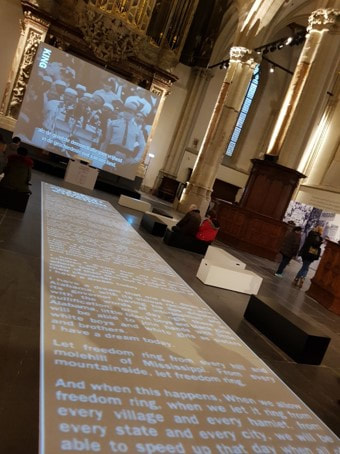
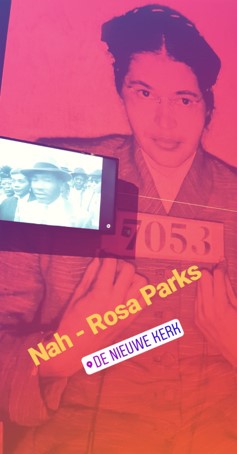






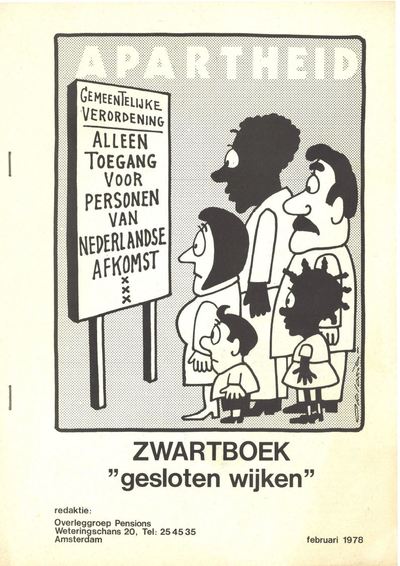

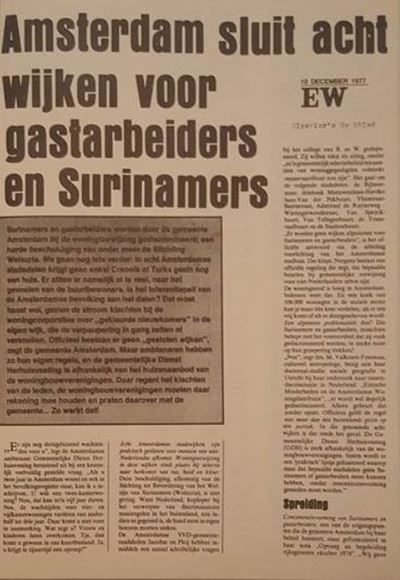
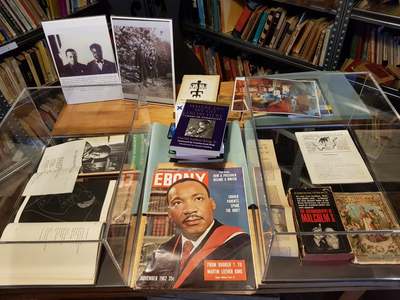


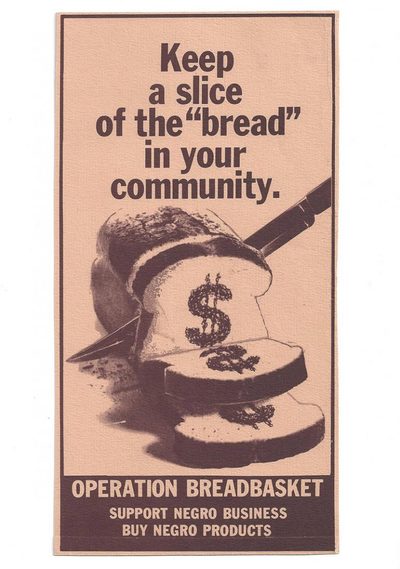
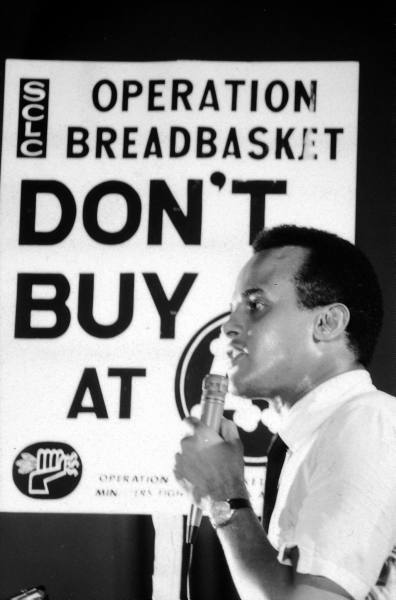

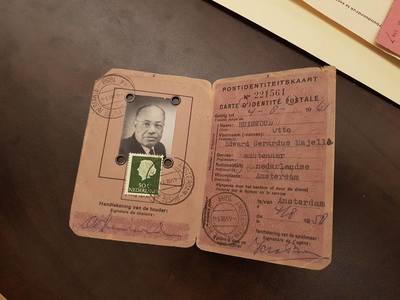
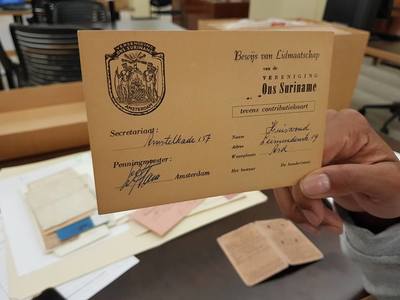

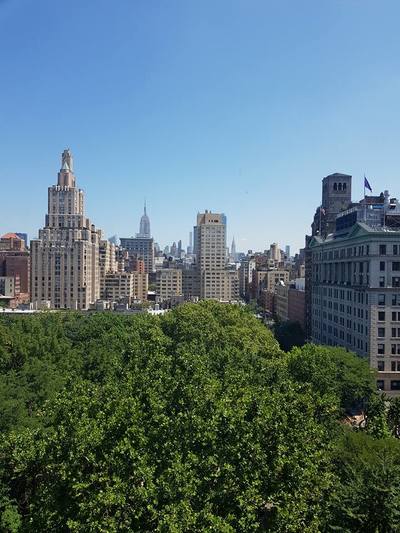
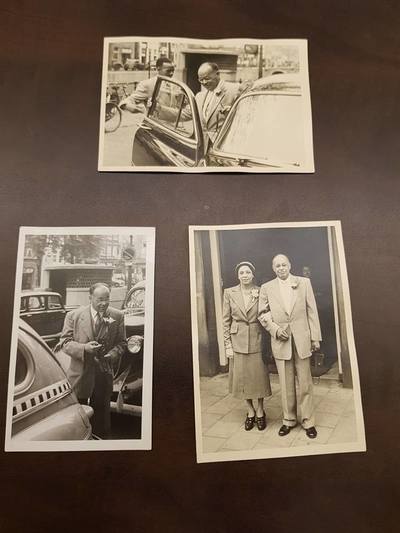


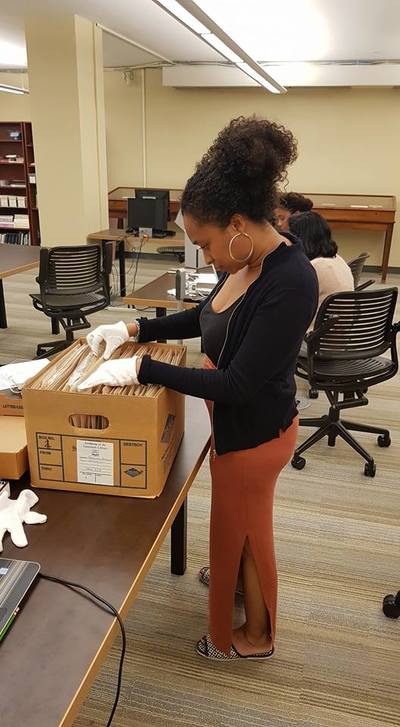

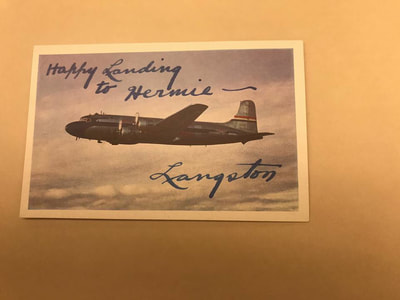

 RSS-feed
RSS-feed
